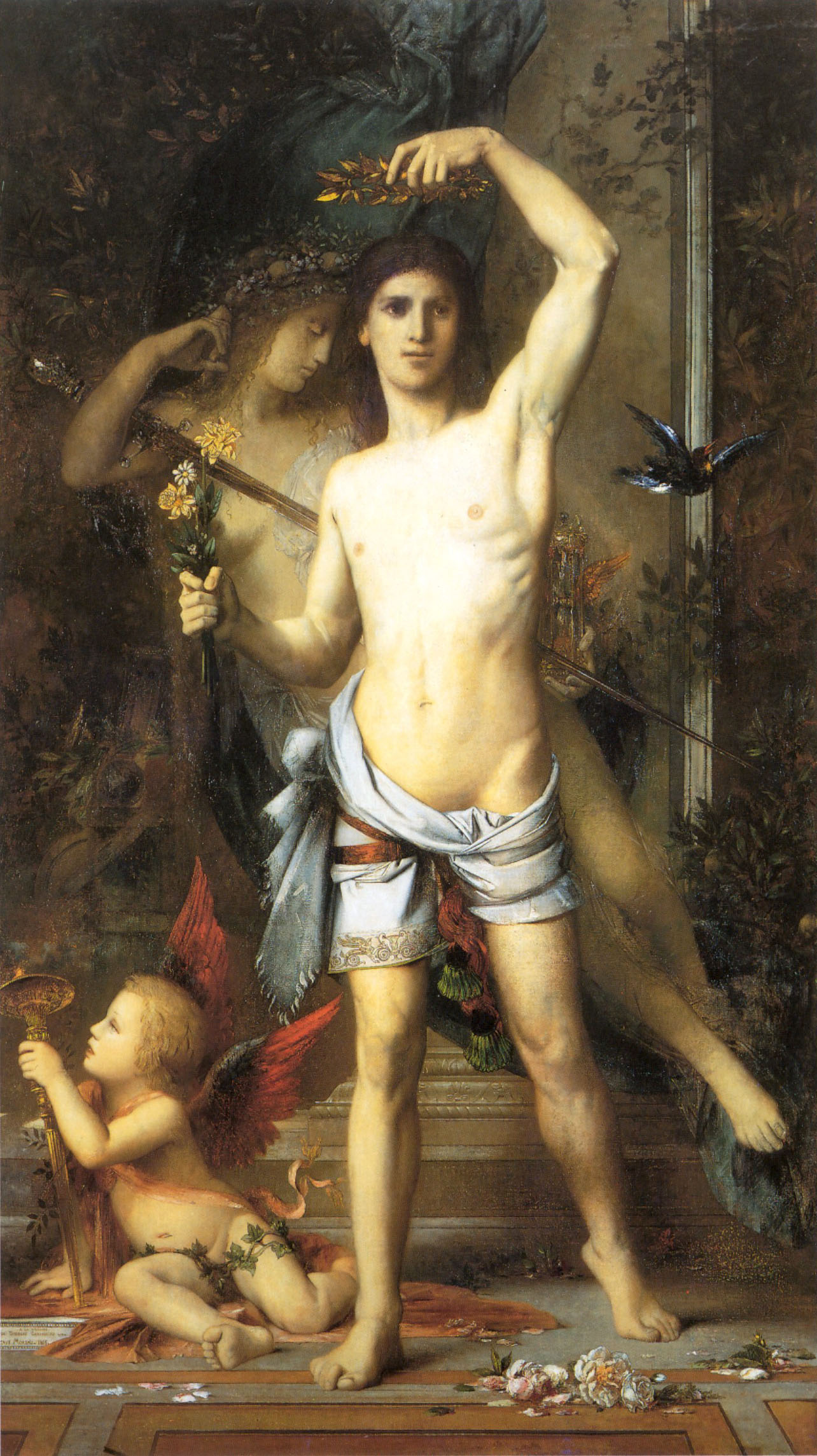



The Young Man and Death
oil on canvas • 36 x 22.8cm
At the 1865 Salon, Gustave Moreau had exhibited a painting in tribute to the painter Théodore Chassériau, who had died in 1856 at the age of 37. The two men had known each other well, and Moreau had great admiration for him. About fifteen years later, he took up the same composition in this watercolour for Charles Hayem, a great collector of his works.
In this version for Hayem the format is more elongated. The young man, whose legs had been criticised in 1865 for being too short, is slimmer. Moreau portrays a "calm and peaceful scene". The young artist at the entrance to the underworld wears a crown of laurels from Apollo. He is followed, not by a skeleton or an old man signifying Time, as Gustave Moreau had originally envisaged, but by a delicate figure. However, it is still Death "sleeping in her eternal indifference", carrying the sword and the hourglass". She floats, on a diagonal, her feet not touching the ground, like a ghost.
In a letter to Fécamp on 15 July 1883, the poet Jean Lorrain confided to Moreau: "I am absolutely haunted by the Hayem watercolours and paintings; the last two Thursdays in his gallery have been the two most exquisite hours of my stay in Paris". The same day he sent a handwritten sonnet "The young man and death" which was published in 1897 in the magazine L'Ombre Ardente. In it, he praises "this dazzling Adonis" who "lightly steps down the three mystical steps".
 Gustave Moreau
Gustave Moreau